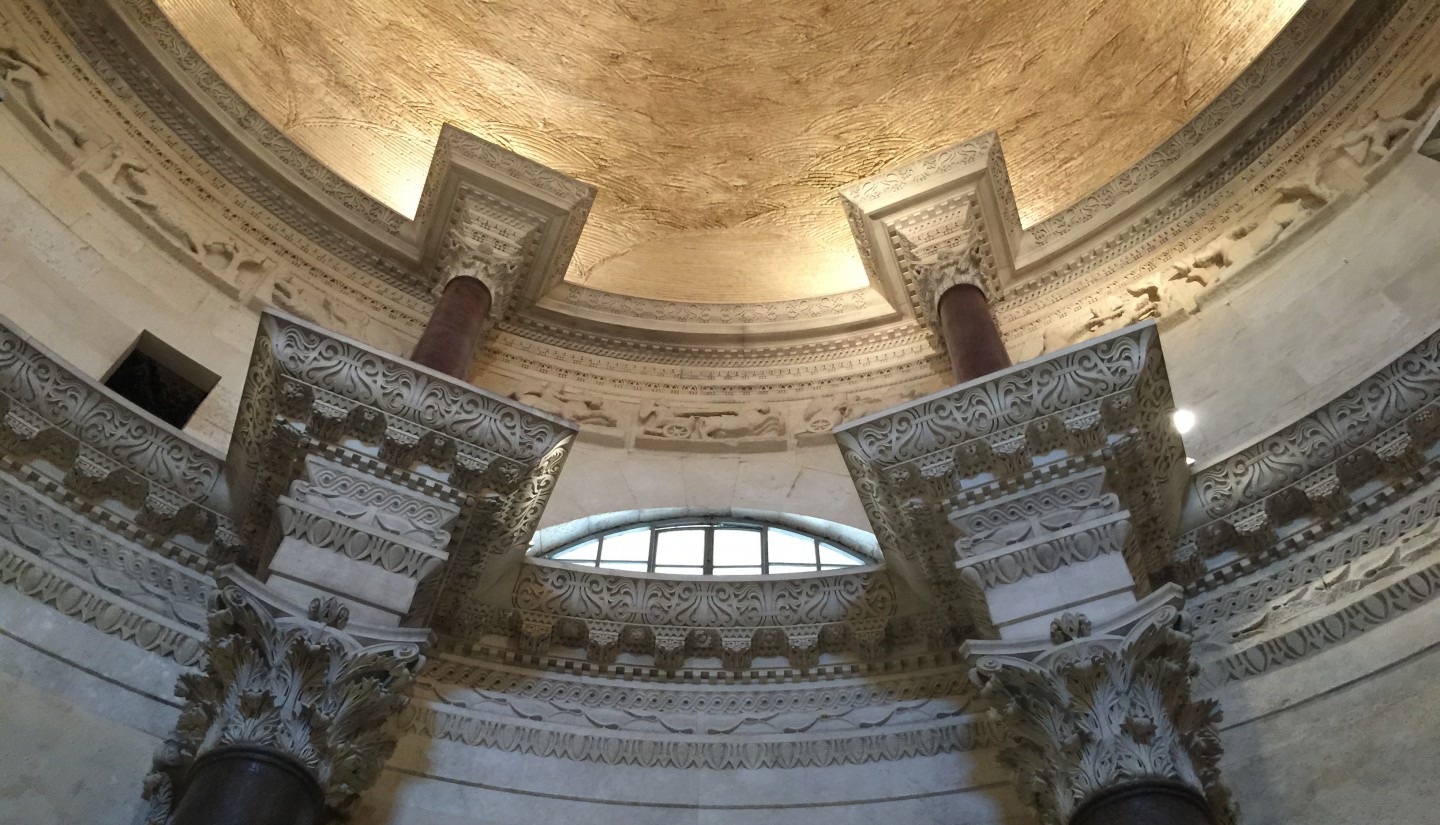Overall Impact ** 2 stars – rather nice local museum with some good exhibits from local digs well displayed.
Roman Features Nothing Roman survives above ground in Alcester!
Reconstructions None
Access *** 3 stars – museum is within the new Alcester library, with helpful volunteers, and you can park at the nearby Waitrose
Atmosphere ** 2 stars – you need to use your imagination
Other *** 3 stars – it’s well set up for children’s activities, and two audiovisuals bring the finds and the market to life.
Looking for Roman interest before seeing Shakespeare’s King John at the RSC at Stratford-upon-Avon, we googled ‘Roman Warwickshire’ and found the Roman Alcester Heritage Centre. This is a fantastic example of a local community enthusiastically embracing its Roman past, with the newly-built town library incorporating a room dedicated to exhibiting the finds from the Roman ‘small town’ of Alauna, modern Alcester.

During the conquest period it is thought there was a fort on the hill with views dominating the valley of the River Arrow, which then moved down into the valley before being evacuated around AD75, no doubt to move north or west for the Flavian conquests. There are some fine military finds exhibited in the cases in the museum. The forts were at the crossroads of the Roman north-south and east-west road grid (the so-called Ryknild Way and the Salt Way from the Fosse Way to Droitwich).

As the area became part of the civilian zone and of the northern civitas of the Dobunni people, so Alcester became a flourishing town of some scale. The finds suggest a degree of prosperity with finds of fine imported Samian tableware, simple mosiacs and wall paintings, and a possible mansio. Alauna was clearly the market for the area.
A noteworthy local find was burnt some asparagus seeds, reportedly the earliest evidence of its cultivation in Britain!

FL VAL/CONSTANTINO/PIO/FELIC/INVICT/AUG
‘For Flavius Valerius Contantinus the dutiful fortunate and unconquered Emperor’
There is a fine milestone dating from Constantine the Great’s reign, and in the 4th Century AD, as the world became more dangerous, a wall was built around the core of the settlement on the original fort hill. The walls involved demolishing a granary and covered less than half of the original town’s full extent.
















